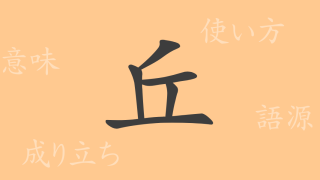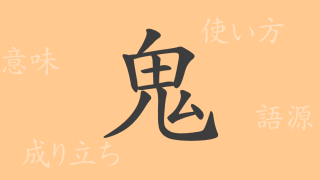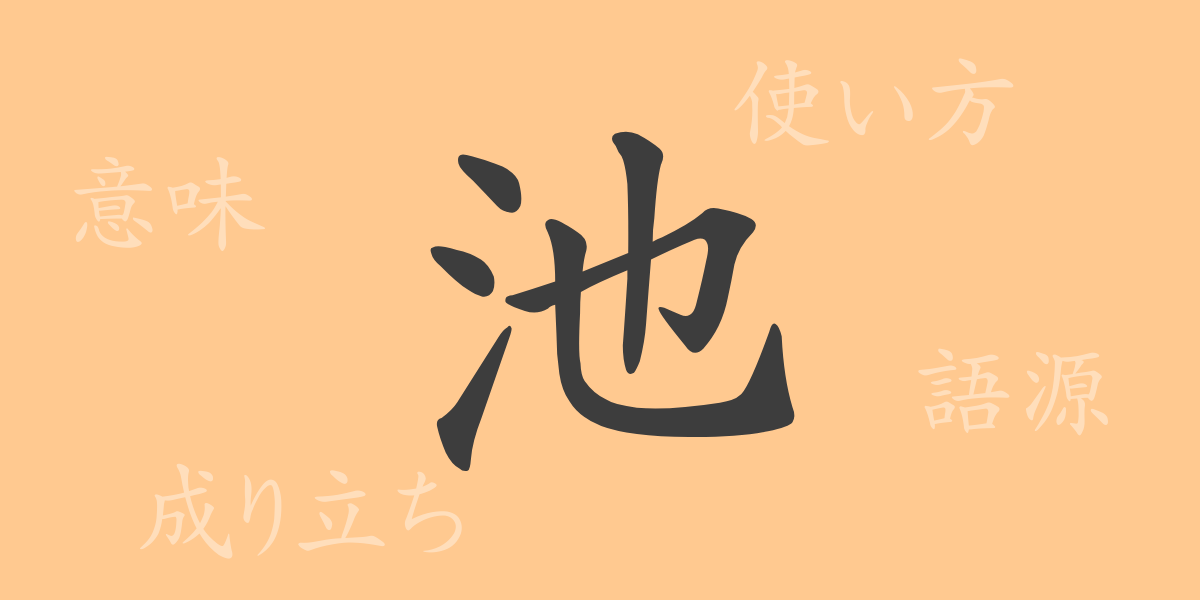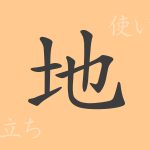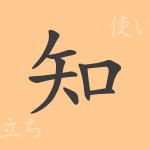The kanji “池(いけ) (ike),” deeply rooted in Japanese culture and landscapes, embodies a harmony with nature and serene beauty. However, the meanings, origins, and roles of “池(いけ) (ike)” in the lives of the Japanese people are often overlooked. In this article, we will delve into the history and meaning behind the commonly used kanji “池(いけ) (ike),” and explore the idioms and proverbs in which it appears.
Origin of “池(いけ) (ike)”
The origin of “池(いけ) (ike)” lies in its basic meaning as a place where water is collected. Historically, it referred to natural water bodies smaller than rivers or lakes. As a kanji, it evolved from the character “也(や) (ya),” which denotes a land near water, to “池(いけ) (ike).” In ancient societies where water was vital, ponds were central to life, essential for agriculture and daily living.
Meaning and Usage of “池(いけ) (ike)”
In modern Japanese, “池(いけ) (ike)” primarily refers to man-made water reservoirs or small lakes. Natural landscapes featuring ponds are often found in parks and gardens, valued for their aesthetic contribution. “池(いけ) (ike)” is also used metaphorically; for instance, “情報の池(じょうほうのいけ) (jouhou no ike)” refers to a place or platform where information accumulates.
Readings, Stroke Count, and Radical of “池(いけ) (ike)”
The kanji “池(いけ) (ike)” is one of the basic characters learned in the early years of Japanese elementary school.
- Reading: The On’yomi (音読み) reading is “チ(ち) (chi),” and the Kun’yomi (訓読み) reading is “いけ (ike).”
- Stroke count: “池(いけ) (ike)” consists of 6 strokes.
- Radical: The radical is “水(みず) (mizu),” associated with liquids, flow, and moisture.
Idioms, Proverbs, and Expressions Using “池(いけ) (ike)” and Their Meanings
There are many idioms, proverbs, and expressions containing “池(いけ) (ike)” in Japanese. For example, the compound “池田大作(いけだだいさく) (Ikeda Daisaku)” refers to a specific individual’s name. The expression “池(いけ)を出(で)る (ike wo deru)” means to leave a small world for a larger one. Additionally, “池(いけ)の鯉(こい) (ike no koi)” refers to a big fish in a small pond, symbolizing a prominent figure in a limited domain. These expressions reflect aspects of Japanese life and sentiment.
Summary of “池(いけ) (ike)”
The kanji “池(いけ) (ike)” is deeply integrated into Japanese nature and culture, extending its influence from ancient times to the present. Its significance goes beyond a mere water body, vividly reflected in the Japanese mental landscape and language. From the beautiful scenes of traditional gardens to profound lessons conveyed through words, “池(いけ) (ike)” remains an indispensable element of Japanese life.





